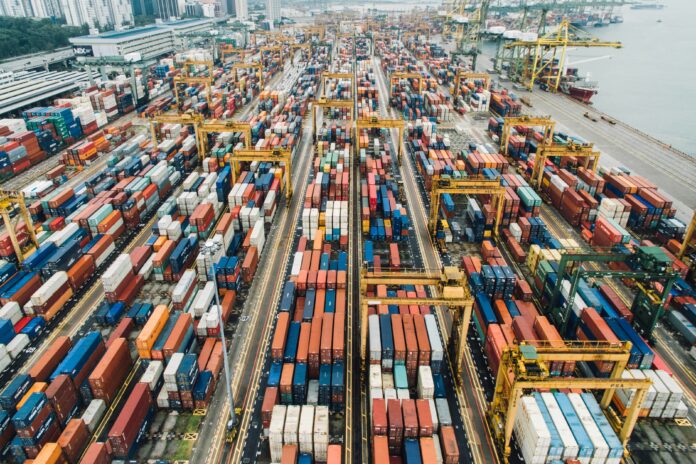Have you ever received damaged goods or worried about the safety of your shipment? Cargo damage during container shipping can lead to financial losses, unhappy customers, and unnecessary delays. Understanding the causes of damage and how to prevent them is key to ensuring your goods arrive safely and in good condition.
What Causes Cargo Damage in Container Shipping?
Cargo damage in container shipping is often caused by factors such as improper packing, poor container conditions, and mishandling during transit. Moisture buildup, container rain, and improper weight distribution are common issues. These problems can result in broken, water-damaged, or even contaminated goods, leaving businesses to face costly replacements.
Different types of cargo damage include physical damage from impacts, water damage from condensation, and improper handling during loading and unloading. Identifying these causes is the first step in minimizing risk and ensuring safe delivery.
How Can Proper Packing Prevent Cargo Damage?
Proper packing prevents cargo damage by securing goods and minimizing movement during transit. Choosing the right packaging materials, such as sturdy boxes and water-resistant wraps, ensures that goods are protected. Filling empty spaces with padding like foam or bubble wrap helps to keep items secure.
For palletized cargo, it’s important to use standard-sized pallets that match the weight and size of your shipment. Ensure that packages fit within the pallet’s borders to avoid overhangs, which can weaken the stability of the load. Wrapping pallets with plastic stretch wrap or using durable strapping can provide extra security.
Why Are Moisture and Condensation a Concern?
Moisture and condensation in containers are common causes of damage, particularly for goods sensitive to water. When containers are loaded in humid environments, moisture-rich air becomes trapped inside. As the shipment moves through different climates, temperature fluctuations cause condensation, leading to “container rain” or “container sweat.”
To prevent moisture damage, consider using desiccants inside the container. These moisture-absorbing materials reduce humidity and keep the interior dry. Plastic pallets, are another good option for preventing moisture absorption from wooden surfaces. Ensuring containers are dry before loading can also make a significant difference.
How Does Proper Loading Protect Your Cargo?
Proper loading protects your cargo by ensuring stability and even weight distribution during transit. Start by placing heavier items at the bottom and lighter ones on top. Avoid double stacking unless the packaging is specifically designed for it.
To keep your logistics operations running smoothly, it’s also essential to secure sensitive data involved in the shipping process. Using VPN for Mac can encrypt your connection, protecting critical shipping documents and communication from cyber threats while ensuring safe data transfer. Filling empty spaces inside the container with dunnage—materials like airbags or foam panels—helps prevent shifting during movement. Ensure that the center of gravity is evenly distributed to reduce the risk of tipping—secure goods tightly with lashing straps or ropes to keep them in place.
Why Is Choosing the Right Container Important?
Choosing the right container is essential to prevent cargo damage. Containers come in various sizes and types, such as standard dry containers, reefer containers for perishables, and insulated containers for temperature-sensitive goods. Select a container that suits your shipment’s specific needs.
Inspect the container before loading to ensure it is clean, dry, and free of structural damage. Check for holes, rust, or worn gaskets that could allow water to seep in. If you’re shipping delicate or high-value items, consider using specialized containers with extra ventilation or temperature controls.
How Can Proper Labeling Help Prevent Damage?
Proper labeling helps prevent damage by ensuring handlers understand how to manage your cargo. Clear and visible labels can indicate fragile contents, stacking restrictions, or special handling requirements. Remove old or unclear labels to avoid confusion during transit.
Include labels on multiple sides of the cargo and place a backup label inside the packaging. This ensures that important information is still available even if outer labels are lost or damaged.
What Role Does Regular Inspection Play?
Regular inspection plays a critical role in reducing cargo damage. Before loading, inspect the container for any potential issues, such as dampness, structural weaknesses, or debris. During transit, monitor the condition of your goods whenever possible.
Document the state of your cargo with photos before and after loading. This can help in case of damage claims and provide proof that your shipment was properly packed and secured.
FAQs
What is container rain, and how can I prevent it?
Container rain occurs when moisture inside a container condenses due to temperature changes. Prevent it by using desiccants, ensuring the container is dry before loading, and choosing moisture-resistant pallets.
How can I protect fragile items during shipping?
Use proper cushioning, such as bubble wrap or foam, to secure fragile items. Clearly label the cargo as “Fragile” and avoid stacking heavy loads on top of it.
What type of container should I use for temperature-sensitive goods?
Use reefer containers or insulated containers for temperature-sensitive goods. These containers maintain consistent temperatures and protect items from extreme heat or cold.
Why is weight distribution important?
Weight distribution is important because uneven loads can shift during transit, causing damage. Place heavier items at the bottom and distribute weight evenly across the container.
How do desiccants work in shipping containers?
Desiccants absorb moisture from the air, reducing humidity levels and preventing condensation. They are especially useful for shipments traveling through humid or variable climates.
Reducing cargo damage in container shipping requires careful planning, proper packing, and regular inspections. By addressing common causes of damage, you can ensure your goods arrive safely, saving time and money while keeping customers satisfied.







